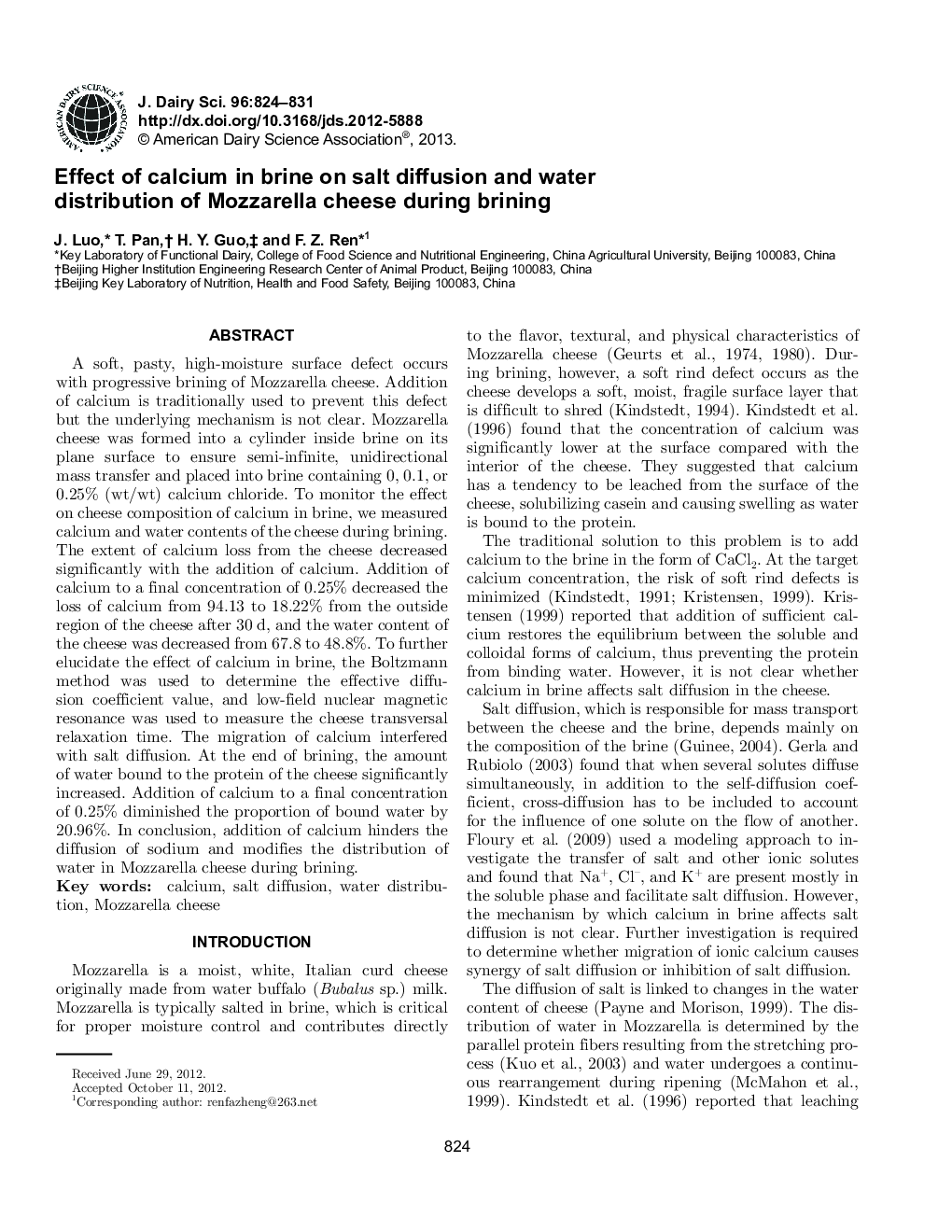| Article ID | Journal | Published Year | Pages | File Type |
|---|---|---|---|---|
| 10979859 | Journal of Dairy Science | 2013 | 8 Pages |
Abstract
A soft, pasty, high-moisture surface defect occurs with progressive brining of Mozzarella cheese. Addition of calcium is traditionally used to prevent this defect but the underlying mechanism is not clear. Mozzarella cheese was formed into a cylinder inside brine on its plane surface to ensure semi-infinite, unidirectional mass transfer and placed into brine containing 0, 0.1, or 0.25% (wt/wt) calcium chloride. To monitor the effect on cheese composition of calcium in brine, we measured calcium and water contents of the cheese during brining. The extent of calcium loss from the cheese decreased significantly with the addition of calcium. Addition of calcium to a final concentration of 0.25% decreased the loss of calcium from 94.13 to 18.22% from the outside region of the cheese after 30Â d, and the water content of the cheese was decreased from 67.8 to 48.8%. To further elucidate the effect of calcium in brine, the Boltzmann method was used to determine the effective diffusion coefficient value, and low-field nuclear magnetic resonance was used to measure the cheese transversal relaxation time. The migration of calcium interfered with salt diffusion. At the end of brining, the amount of water bound to the protein of the cheese significantly increased. Addition of calcium to a final concentration of 0.25% diminished the proportion of bound water by 20.96%. In conclusion, addition of calcium hinders the diffusion of sodium and modifies the distribution of water in Mozzarella cheese during brining.
Related Topics
Life Sciences
Agricultural and Biological Sciences
Animal Science and Zoology
Authors
J. Luo, T. Pan, H.Y. Guo, F.Z. Ren,
